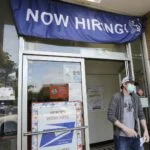According to those with knowledge of the situation, FTX filed for bankruptcy last week, but the founder of the cryptocurrency exchange still believes he can raise enough cash to compensate users.
The people said Mr Bankman-Fried spent the weekend making calls to secure commitments from investors to cover a shortfall of up to $8 billion to pay back FTX’s customers. Mr Bankman-Fried was accompanied by a small number of remaining employees.
The attempts to make up for that deficiencies have so far been unsuccessful.
Friday saw the filing of FTX for bankruptcy protection and the resignation of Mr Bankman-Fried as CEO. Its largest shareholder is still him. Customers of FTX were shocked by the bankruptcy announcement because they had hoped to get their money back.
Users were convinced that the company was “fine” in now-deleted tweets from Mr Bankman-Fried in the days leading up to the filing.
Loans intended to support operations are occasionally given to businesses seeking bankruptcy protection.
With debtor-in-possession financing, the first money a company makes after it survives will be used to pay off that lifeline. Early on in the bankruptcy process, companies are less likely to attempt to raise new equity finance because debt holders have priority over any remaining assets.
Even if Mr Bankman-Fried is successful in raising funds, he will almost certainly need to negotiate with creditors and obtain approval from bankruptcy court officials.
The funds in Mr Bankman-case Fried’s are intended to repay individual traders and institutional clients who have been unable to withdraw funds, according to the sources.
FTX lent billions of dollars in customer assets to fund risky bets by its affiliated trading firm, Alameda Research, setting the stage for its quick demise.
Mr Bankman-Fried told investors last week that he needed emergency funding to cover a potential $8 billion shortfall due to withdrawal requests.
According to court filings late Monday, FTX’s bankruptcy could involve more than one million creditors.
According to people familiar with the talks, Mr Bankman-Fried had spoken to companies such as rival crypto exchanges Coinbase and Kraken, as well as hedge funds and venture capital investors, before filing for Chapter 11.
Binance, his biggest rival, agreed to buy FTX briefly before withdrawing.
The amount required to make FTX profitable would most likely be multiples of the $1.9 billion raised by the company during its existence.
FTX received $400 million in funding in January from a long list of Silicon Valley and Wall Street names, including Tiger Global and SoftBank Group Corp.
According to people familiar with the efforts, FTX initiated talks this summer to raise another $1 billion from investors to acquire companies during the market downturn.
The sources claimed that FTX attempted to close the round in September but was unsuccessful. To raise money, Mr Bankman-Fried travelled to the Middle East in the weeks preceding the firm’s collapse, the sources claimed.












